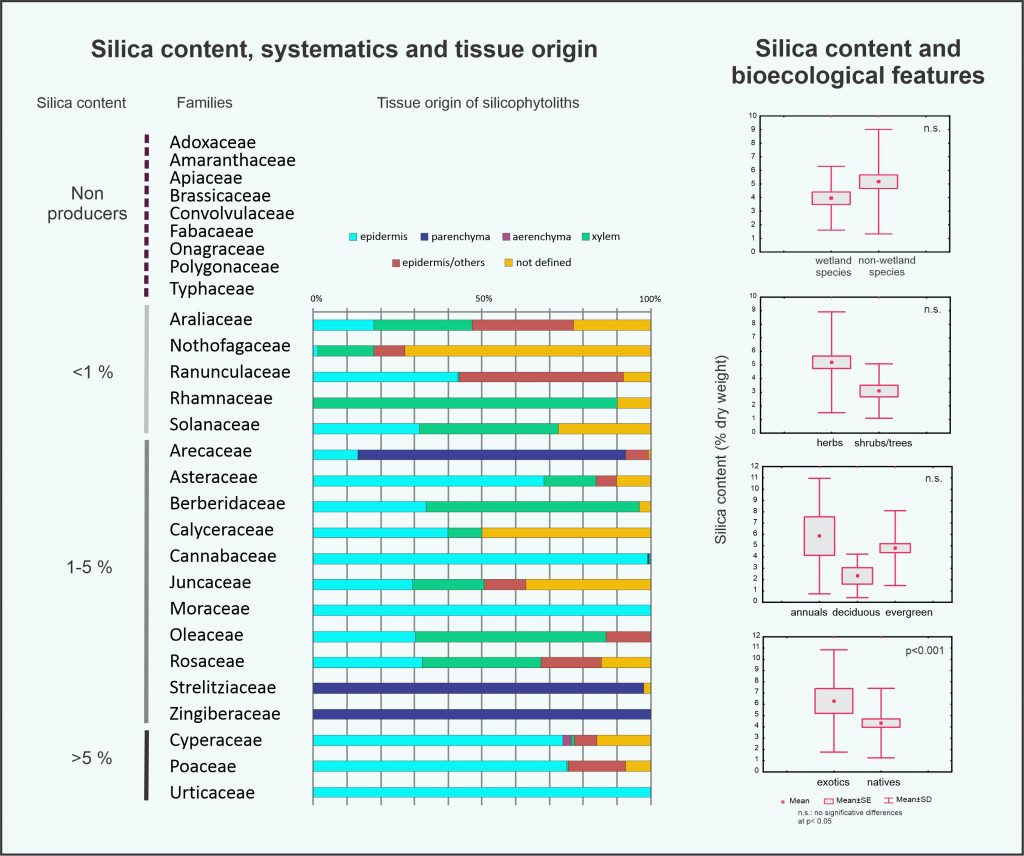How are systematics and biological and ecological features related to silica content in plants? A study of species from southern South America
- Post by: Doris Barboni
- February 10, 2021
- No Comment
Honaine, M.F., Benvenuto, M.L., Montti, L., Natal, M., Borrelli, N.L., Alvarez, M.F., Altamirano, S.M., Rito, M.D., Osterrieth, M.L., 2020. How are systematics and biological and ecological features related to silica content in plants?: a study in species from the Southern of South America. https://doi.org/10.1086/712357 (in press)
We analyzed published and unpublished data about silicophytolith content from 105 species of South America and we examined, in a phylogenetic context, the relationship with the anatomy and some bioecological features such as life cycle, growth form, plant origin and environmental preferences. The silicophytolith content of all samples was determined using the same technique in order to avoid differences between methodologies, and we applied measurements of phylogenetic signal and phylogenetic generalized least-squares regressions (PGLS). A low phylogenetic signal of silica content was found, which may be explained by the inter- and intra-clade variability. This supports the hypothesis that silicophytolith accumulation is a homoplasic character among plants. Besides intra-clade variation, we could observe some general patterns: dicotyledons accumulated silica mainly in typical epidermal cells, and the families that had the highest contents, stored it also in cystoliths; most of the monocot families analyzed showed high silicophytolith contents and high diversity of silicified cells. Based on the overall analysis of the silicophytolith content and their distribution in plant tissues, a high content could be related to specific accumulation mechanisms and roles of silica. Although annuals, herbs and non-wetland species have higher silicophytolith content than perennials, shrub/trees and wetland species, the only statistical significative difference is observed in the plant origin variable (exotics > natives). This finding suggests some ecological role of silica in exotic plants, regarding their success in novel environments.


